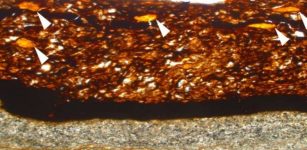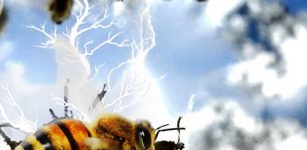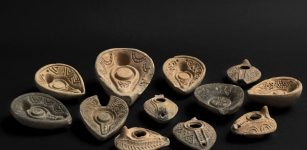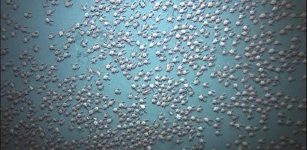118 Million-Year-Old Fossilized Dinosaur And Bird Feathers Found In Australia
Eddie Gonzales Jr. – MessageToEagle.com – Fossil feathers from the Koonwarra Fossil Bed in southeastern Australia record the first demonstrable dinosaur described from the Mesozoic polar regions.
Feathered dinosaur fossils are famous, but examples from the Southern Hemisphere are especially rare and mainly include only isolated feathers.
 Australian feathered polar dinosaur. Copyright Peter Trusler
Australian feathered polar dinosaur. Copyright Peter Trusler
A cache of 118 million-year-old fossilized dinosaur and bird feathers has been recovered from an ancient lake deposit that once lay beyond the southern polar circle.
An international team of researchers analyzed a collection of 10 such fossil feathers found in Australia, which reveal an unexpected diversity of tufted hair-like ‘proto-feathers’ from meat-eating dinosaurs, together with downy body feathers, and wing feathers from primitive birds that would have been used for flight.
Uniquely, these fossil feathers were all entombed in fine muddy sediments that accumulated at the bottom of a shallow lake close to the South Pole during the Age of Dinosaurs, researchers sais.
“Dinosaur skeletons and even the fragile bones of early birds have been found at ancient high-latitudes before. Yet, to date, no directly attributable integumentary remains have been discovered to show that dinosaurs used feathers to survive in extreme polar habitats”, Dr. Benjamin Kear from Uppsala University in Sweden, a leading author on the study, said in a press release.
“These Australian fossil feathers are therefore highly significant because they came from dinosaurs and small birds that were living in a seasonally very cold environment with months of polar darkness every year”.
The fossil feathers were discovered in the Koonwarra Fish Beds Geological Reserve, which is a heritage-listed site 145 km southeast of Melbourne in Victoria, Australia.
“Fossil feathers have been known from Koonwarra since the early 1960s, and were recognized as evidence of ancient birds, but have otherwise received very little scientific attention. Our study is thus the first to comprehensively document these remains, which include new specimens that were examined using cutting-edge technologies”, said Dr Thomas Rich of the Melbourne Museum in Australia, who has led numerous expeditions to the Koonwarra locality.
“The Koonwarra feathers are preserved in incredible detail”, said fossil bird expert Professor Patricia Vickers-Rich of Monash University and the Swinburne University of Technology in Melbourne.
“There are even tiny filament-like structures that would have ‘zipped’ the feather vanes together, just as in the flight feathers of modern birds”.
However, unlike the structurally complex feathers of birds today, which are characterized by interlocking branches called barbs and barbules, different kinds of small dinosaurs had coverings that comprised much simpler hair-like ‘proto-feathers’.
“Dinosaur ‘proto-feathers’ would have been used for insulation”, said Dr. Martin Kundrát, of Pavol Jozef Safarik University in Slovakia, a leading author on the study.
“The discovery of ‘proto-feathers’ at Koonwarra, therefore, suggests that fluffy feather coats might have helped small dinosaurs keep warm in ancient polar habitats”.
Microscopic remains of possible melanosomes cellular structures that contain color pigments were also detected on several of the fossil feathers found at Koonwarra.
These traces occurred across the uniformly dark feather surfaces, as well as in distinct bands that might represent original patterning from the polar dinosaurs and birds.
The Koonwarra fossil feathers provide the first record of dinosaur integument from the ancient polar regions and hint what was once a global distribution of feathered dinosaurs and early birds.
Written by Eddie Gonzales Jr. – MessageToEagle.com Staff










